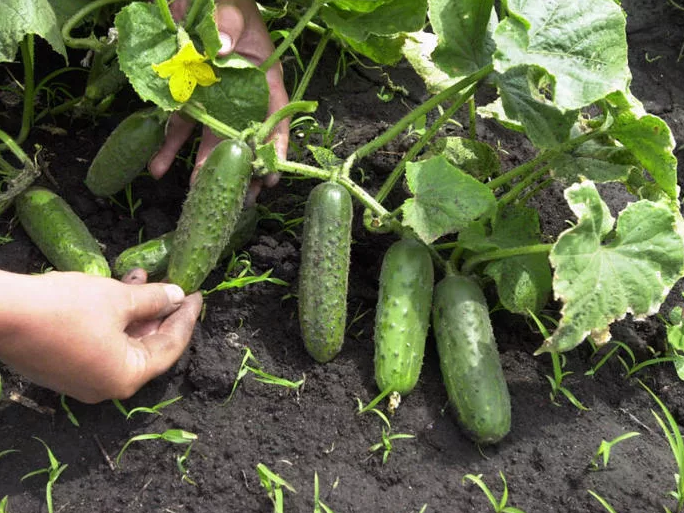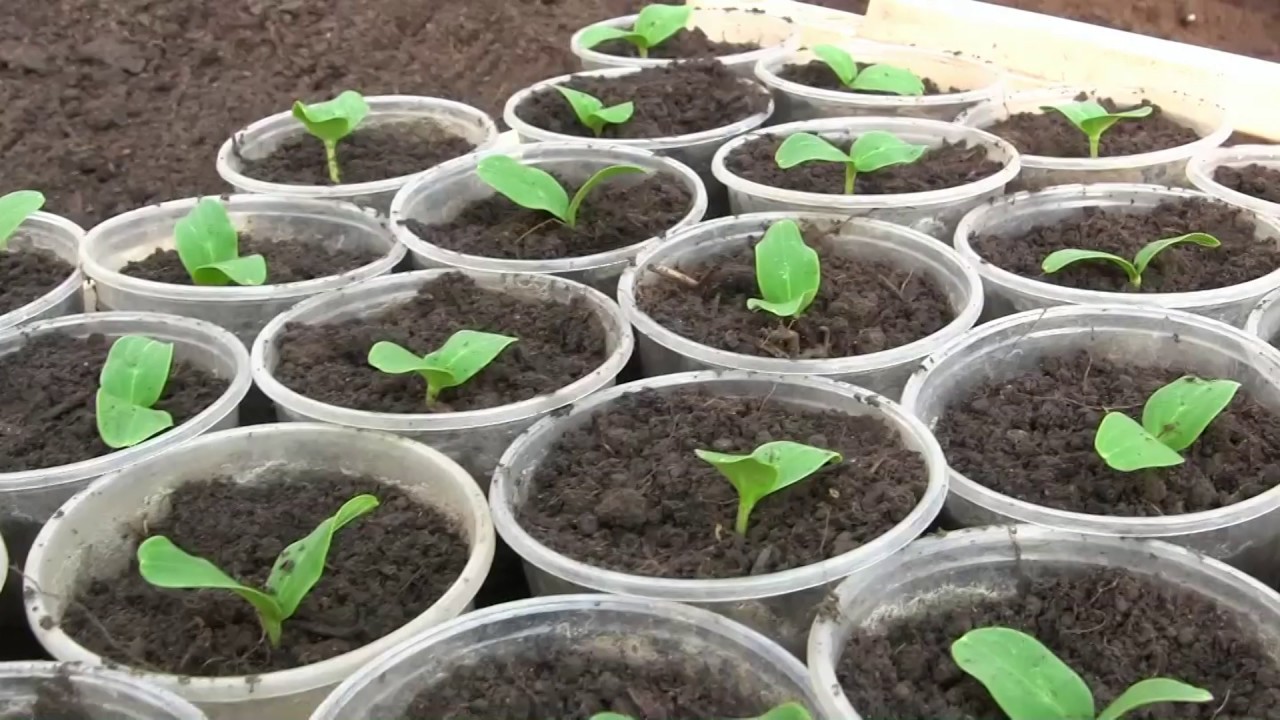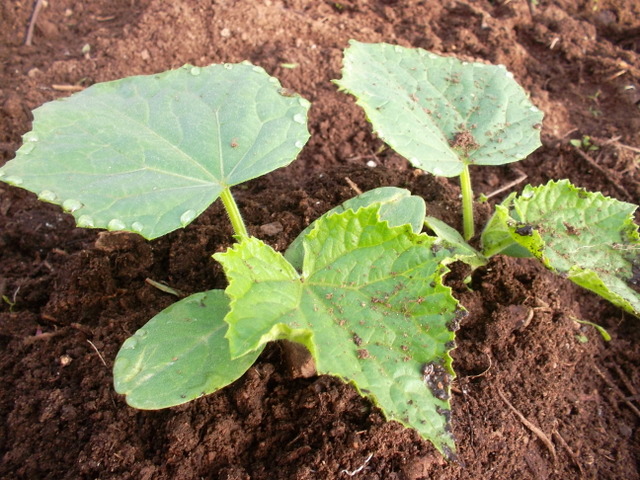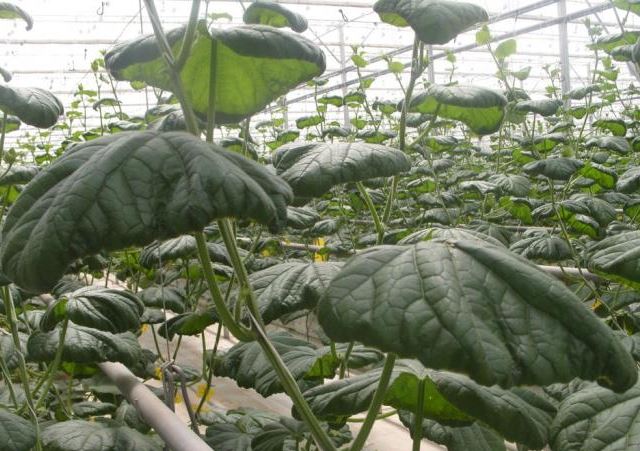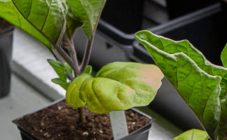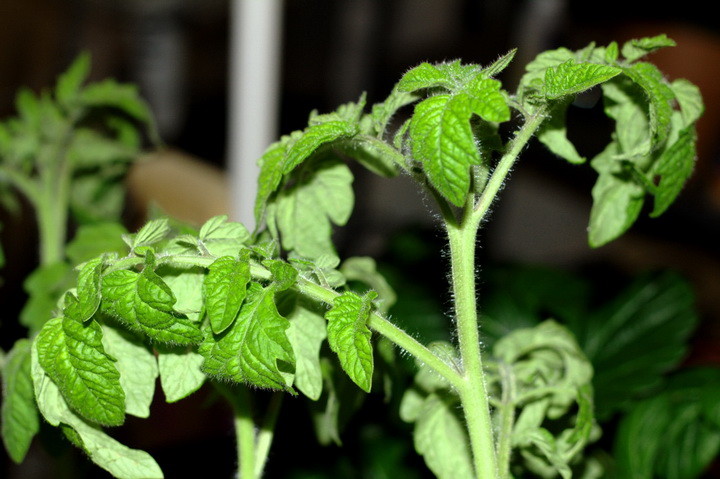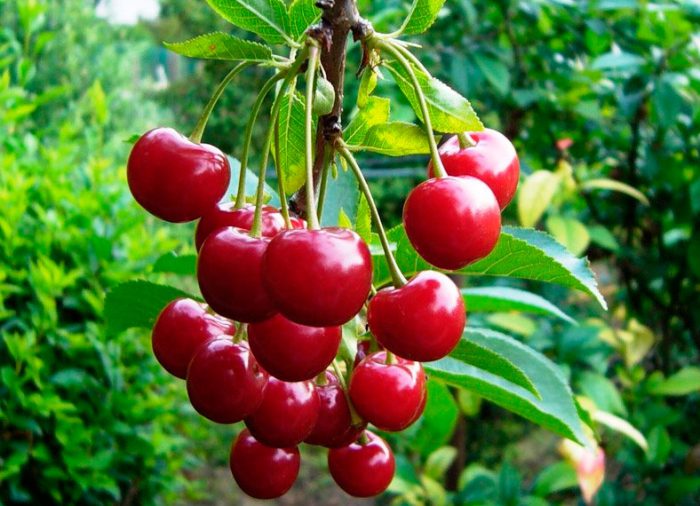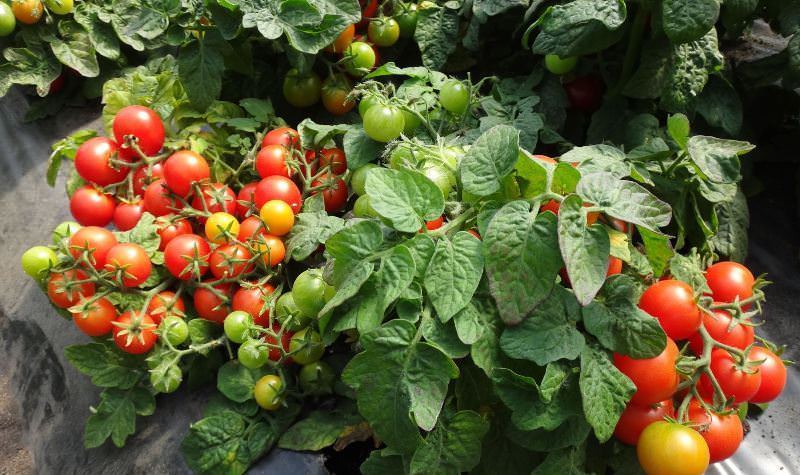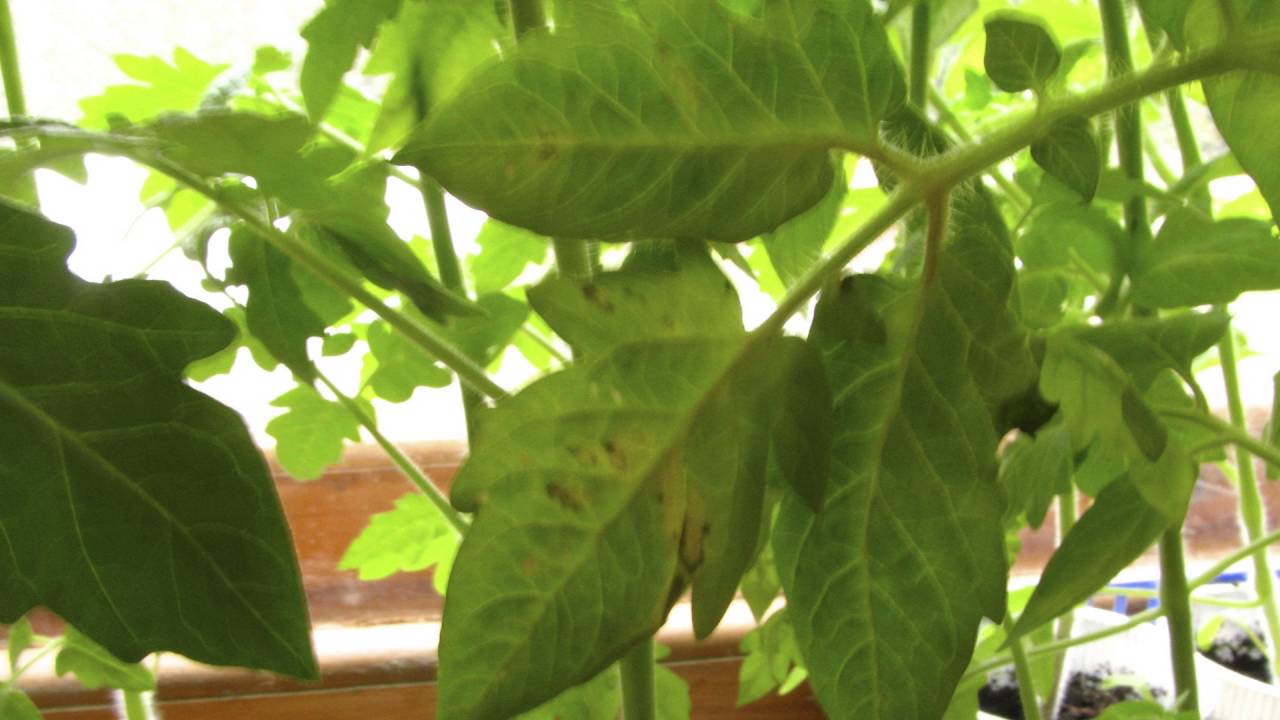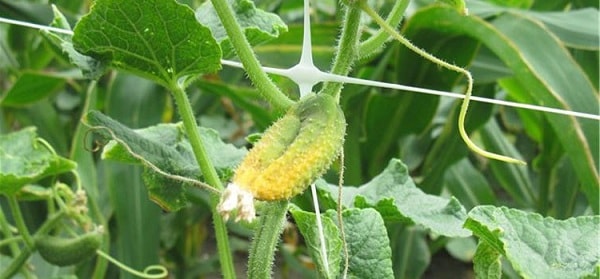Content:
Cucumber is a frequent guest on the beds and on the table. Most gardeners grow it, praising the plant's unpretentiousness and ease of caring for it. However, not everything is so simple. Cucumbers, if cultivation rules are not followed, are prone to dangerous diseases. Many of these diseases have similar symptoms. To understand why the leaves of cucumbers curl inward or the ovaries turn yellow, you need to analyze all the procedures done with the plant and find an error. Otherwise, you can completely lose the crop.
There are many ways to grow cucumbers. Someone gets the harvest right on the windowsill, someone cares for greenhouse plants, and some carry out planting directly into the open ground. Different growing conditions require a special approach in each case: what is good for a cucumber in the open field may have a bad effect on the same plant placed in a greenhouse. Therefore, it makes sense to consider the aspects of caring for them separately.
Caring for cucumbers at home
Those who do not want to wait for the harvest until summer grow cucumbers at home, on the windowsill.
The nuances of planting and care:
- The seeds must be taken full, healthy. The priority is shade-tolerant self-pollinated varieties, parthenocarpic hybrids. When choosing a bee-pollinated variety, the plant will have to help by transferring pollen from a male flower to a female one;
- Photophilous cucumbers are placed on the south side. Additional lighting will not interfere: the plant needs 12-hour daylight hours. It is also worth taking care of insulation, the cucumber does not tolerate drafts;
- A soil mixture suitable for growing cucumbers is peat and humus with the addition of sand and ash. The container for growing is selected large, 5-7 liters. Drainage must be laid at the bottom;
- Sowing times vary from late February to early January. Fruits should be expected in 2-2.5 months. Fruiting will continue for about the same;
- Before planting, the seeds must be disinfected by holding them in a solution of potassium permanganate. Additionally, the seed is treated with growth stimulants. For the early emergence of seedlings, seeds are germinated;
- Seeds are laid in the ground to a depth of 2 cm, sprinkled with earth. The container is covered with foil or glass;
- The optimum temperature for germination is + 25 ° C. After emergence, it can be reduced (up to + 20-23 ° С);
- 14 days after the emergence of young sprouts, they are fed with mineral fertilizers or urea solution. A week later, the procedure is repeated;
- Water the cucumbers on the windowsill every day with warm, settled water. If the lighting of the plantings is intense enough, double watering is allowed;
- In addition to watering, they provide optimal air humidity. Plants are sprayed from a spray bottle twice a day, or saucers of water are placed next to them.
If a transplant is planned, the plants dive 25 days after germination.
Greenhouse cucumber care
In unfavorable weather conditions, there is always a risk of being left without a crop of heat-loving plants. Trying to avoid trouble, greenhouse owners place cucumbers there.
Greenhouse cultivation also has its own nuances:
- If an insect pollinated variety is selected for planting, you will have to attract bees to the greenhouse, planting sunflowers or petunias there;
- When growing cucumbers from seedlings, 30-day-old seedlings are transferred to the greenhouse in May. If there is additional heating - in April;
- Mineral fertilizers are embedded in the soil, then young plants are planted without removing the earthen lump from the roots;
- At a distance of 1 m from the ground, a rope is pulled so that the grown cucumber whips can catch on;
- The planting is watered abundantly, mulched with peat.
The conditions for further keeping cucumbers in the greenhouse are as follows:
- Temperature + 21-28 ° С;
- Watering is done in the morning, its intensity depends on the degree of dryness of the soil;
- The humidity is maintained by a water barrel placed in the greenhouse. Evaporation saturates the air with moisture;
- Before and after watering, the soil is carefully loosened, preventing the formation of a crust.
Outdoor cucumber care
Cucumbers, planted directly into the ground, need special care. This is due to possible changes in temperature and humidity.
Basic rules for planting and care:
- The optimum time for sowing is mid-May. It is advisable to focus on the characteristics of the variety and the local climate;
- Watering cucumbers in the open field is necessary with warm water, in the morning or evening. It is impossible to water too abundantly, but it is also undesirable to allow the soil to dry out in the root zone;
- Starting from the phase of appearance of 2 true leaves, the plants are fed. Mineral fertilizers alternate with organic matter;
- Several times during the season, cucumbers huddle, hiding the roots appearing on the soil surface;
- To form a plant, pinch the central shoot at the level of the 6th leaf. This stimulates the development of lateral shoots and ovaries on them.
Otherwise, the cucumbers growing on the site need the same conditions as their greenhouse cousins: good lighting, loose soil, no frost and cold winds.
Causes of leaf curling
With improper care, plants often begin to ache. When the leaves of cucumbers curl, not every gardener knows what to do. Therefore, shoots not saved in time often die, not even having time to bloom and give fruit. In order to know for sure exactly what measures should be taken if the leaves of cucumbers are curling or there are other signs of disease, it is necessary to understand the cause of what is happening.
Possible reasons:
- Lack of nutrients. When the leaves of cucumbers curl downward, while acquiring a whitish color, this may indicate a lack of nitrogen. Twisting itself occurs due to the fact that the main vein in the middle of the leaf grows faster than the leaf blade. Top dressing with nitrogenous fertilizers, such as ammonium nitrate, can help cope with the problem. When the leaves are rolled up, the plant is fertilized with potassium salt, as this is a signal of a lack of potassium. It is also evidenced by the acquisition of a reddish tint by the leaf;
- Powdery mildew. A sign of this disease is not only the appearance of white bloom, but also the twisting of the leaf blade. Most often, dew attacks thickened, poorly ventilated plantings, especially in greenhouse and indoor conditions. Low temperatures, the use of cold water for irrigation contribute to its development. You can fight the disease with a 1% solution of Bordeaux liquid, which is sprayed with cucumbers;
- Virus. Sometimes it is not possible to find out why the leaves of cucumbers curl. Care is carried out correctly, external factors are favorable for growing, there are no signs of disease, and the leaf blades are still deformed. Most likely, the plant was attacked by a virus. To avoid general infection, diseased cucumbers are dug up and burned;
- Insufficient watering. The simplest reason for foliage to curl and dry.This happens because of the hot weather and the fear of "overflowing" the soil under the cucumbers. It is simple to fix the problem: it is enough to restore the water balance in the ground and carefully monitor the soil moisture;
- Too cold / hot. With hypothermia or intense exposure to direct sunlight, cucumber leaves shrink, turn yellow, dry. This is especially true for plants living on the windowsill close to the glass. It would be wiser to find another place for them;
- Pest attack. Turning over the deformed sheet, you can notice an abundance of small insect pests on it. These can be spider mites or aphids. The most effective way to deal with them is with the help of insecticides (Aktellik, Aktara, Fitoverm, Barguzin, etc.). But during the period of development of fruits, chemical agents should not be used: they can enter the body and cause poisoning. It is better to use the folk method of fighting insects - garlic infusion. To prepare 500 grams of chopped garlic, pour 3 liters of water. Insist 5 days, after filtering and spraying;
- Root rot. Its symptoms are yellowing, wilting and curling of the leaves, starting from the bottom. At the same time, the root part of the stem becomes brown. If the first signs of rot are noticed, the plant is treated with trichodermine;
- Ammonia burn. If the leaves of cucumbers are folded, this may indicate the introduction of too large a dose of ammonium nitrate or fertilization of the soil with unripe manure, which in no case should be done. In order for the ammonia to be washed out of the soil, the plant must be watered abundantly several times. And manure will have to be scooped away from the roots.
Preventive measures
Disease is always easier to prevent than to cure. In order to prevent curling of leaves in cucumbers, you need to remember a few rules:
- Top dressing is carried out only when there is a need for it. It is unacceptable to exceed the dosage of fertilizers, even organic ones;
- Cucumbers are watered only with warm water, observing the measure;
- Early sowing is dangerous due to the return of the night cold, which means that it is not advisable to rush with it. If the cucumber is greenhouse or indoor, it is important to monitor the level of heat supply from heating devices;
- By regularly examining the leaves for damage by insects, you can avoid their reproduction and mass invasion of plantings;
- It is worth following all the rules for planting cucumbers in order to avoid thickening, lack of light and moisture.
Having identified the reason why the leaves of cucumbers curl, you can safely begin to eliminate it. Timely measures taken will save both the plant itself and the future harvest.
